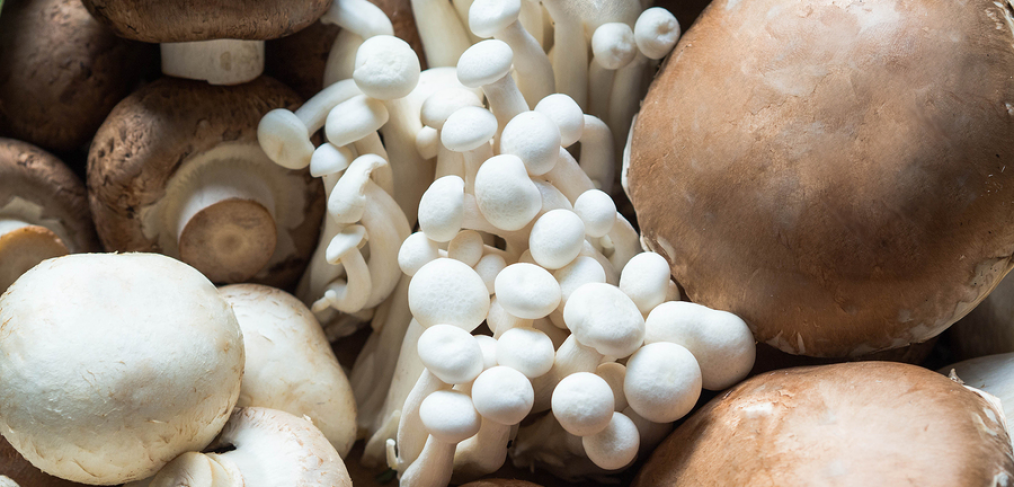
Growing Mushrooms at Home – Gardening Tips

If you grew up in the Midwest, like me, you might have seen your parents or grandparents harvesting tomatoes, cucumbers, zucchini, corn, or squash. It’s unlikely you’ve had much experience watching someone grow mushrooms.
Mushrooms seem like a bit of a mystery. We have seen them growing wild on logs, we have heard tell of delicious morels that can be found in the woods in early spring, and we have tasted the even-rarer truffles in the form of truffle oil or salt on gourmet dishes.
However, how many of us know about how mushrooms grow? Would it surprise you to know you can easily grow them at home?
Life Cycle of Mushrooms
When we think of mushrooms, we think of a cap and a stem, right? And we might know something about how fungus doesn’t have a root system.
However, how does it grow, then? There is a lot more that you don’t observe that goes into creating that tasty, edible fungi. The keyword here is what’s called mycelium.
Did you know mushrooms are like fruit? It’s true!
The edible fungi provides the spores to keep the species going, but the main body of the plant is this complex network of organisms we call mycelium.
Spores are a bit like seeds, except that they must mix with other compatible spores once they fall to the ground to form more mycelium. Mycelium might be a single organism or a colony of several organisms. The largest organism in the world is a mycelium mat covering 2,400 acres in Oregon. Imagine that!
Mycelium first produces pinheads as it starts to grow. These little bumps go through a stage called primordia, in which they resemble tiny baby mushrooms, and then become full-grown mushrooms which mature and drop their spore to complete the life cycle.
Commercial Growth
So far, I have described how mushrooms reproduce in the wild without any help from human hands. To grow them at home, you need to mimic their growth pattern in the wild with a few changes.
All mushrooms need spores, spawn, and a substrate. We have covered spores, but let’s define our other two terms.
Spawn
Mycelium spawn is simply any substrate that already has a growth of mycelium. You can speed up the process by using spawn instead of starting from scratch.
Substrate
Some species of mushrooms will grow on coffee grounds but many of them need to grow on wood. It’s their source of energy.
Many growers introduce spawn or spores to their substrate (also known as a growing medium) in sterile conditions to lessen the chances of introducing mold or fungus other than the one they’re trying to grow.
However, it’s not completely necessary. After that, the whole thing needs to get shut up in a warm, dark place for several weeks or months. The goal is for the mycelium to cover your substrate completely and stabilize. It’ll look like a solid white mat.
To get the mycelium to fruit, it needs to be exposed to air and kept damp. Usually, growers cut open the bags where the mycelium has been growing and mist it daily with a spray bottle. It doesn’t take more than a few days for pinheads to form, and tiny mushrooms begin to grow.
The cool thing about some species of mushrooms is that the mycelium can continue to fruit – or flush – several times after each harvest of a ripe mushroom. It will continue to do this until it has exhausted all of its energy.
Each mycelium does get old in a process called senescence. It loses its ability to keep fruiting. At this point, growers have to use spores to grow a new mycelium.
Popular Mushrooms to Grow at Home
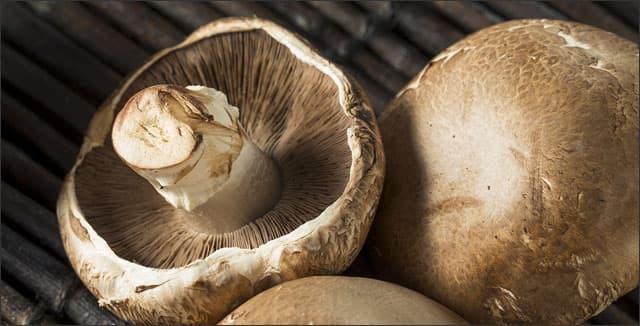
Portobello Mushrooms
Do you know what mushroom is the most popular? I bet you can guess: Portobello mushrooms! Did you know button mushrooms, crimini/baby bella, and Portobellos are all the same species?
The same way we eat bell peppers at different stages of ripeness for a different texture and flavor applies to this species of mushroom. The little ones are white, but they become brown as they continue to mature. The big, meaty Portobellos are what they look like at the end.
Here’s the fun part: these mushrooms need composted manure as a growing substrate.
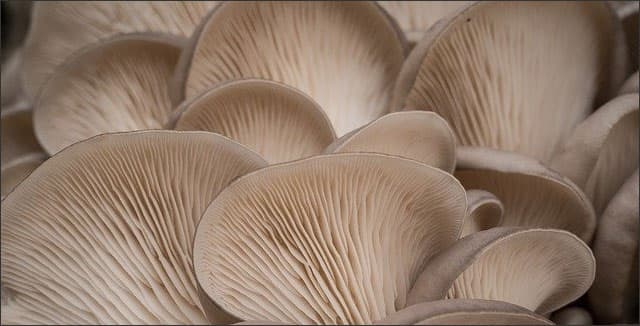
Oyster Mushrooms
Oyster mushrooms grow on the sides of trees in nature, so they appear as a large, flat cap with no stem. They are popular in Asian cooking but aren’t eaten as often in western countries. They can be grown on a variety of mediums, including cardboard, straw, and coffee grounds.
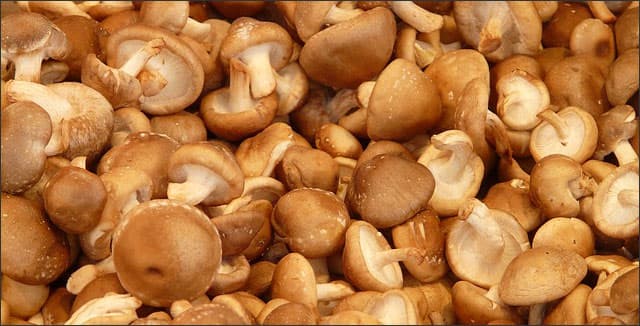
Shiitake Mushrooms
Shiitake mushrooms are not only delicious, they are also good for reducing cholesterol. You have probably eaten shiitake if you have had Japanese cuisine.
These delectable morsels have a smoky flavor and a meaty texture, and they are often sold dried. Shiitakes need a hardwood or hardwood sawdust substrate.
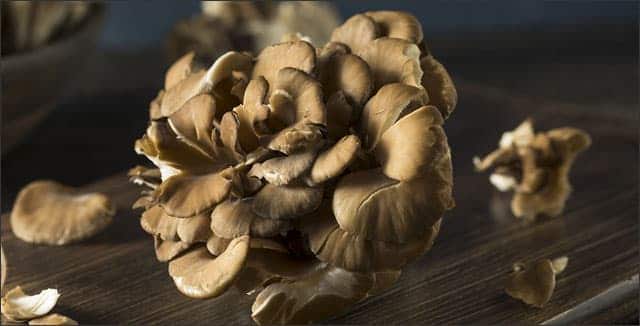
Maitake Mushrooms
The nickname “hen of the woods” refers to how it looks like the ruffled feathers of a hen’s tail. It doesn’t taste like chicken but instead has a strong earthy taste.
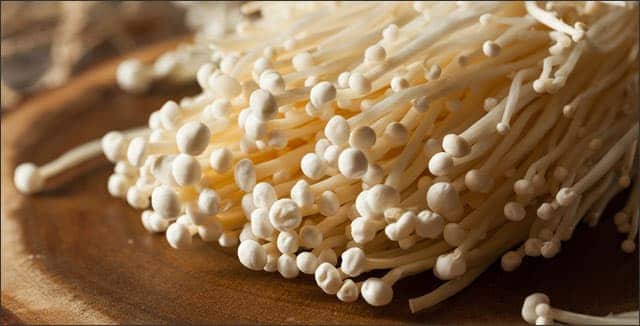
Enoki Mushrooms
Enoki mushrooms are super cute as well as tasty. You can grow them in jars indoors, and they spring up in tight clumps with tiny caps and long stems. They are very compact also, so they’re ideal for small space growers.
At-Home Considerations for Growing Mushrooms
To detail the different ways you can grow different mushrooms would take another post. However, the main things you need are growth medium, the right strain of fungus, dark and temperature control, water, and time.
Some varieties can be grown outdoors and some indoors. In other words: growing mushrooms is just like growing any other garden plant. Well, almost. And it’s fun! It’s so fun that you might consider growing these tasty morsels to sell.
Takeaway
Mushrooms are delicious, exciting, and have a surprising array of health benefits. They are relatively easy to grow at home, and they could also help you turn a profit if you plan to grow them commercially.
What is your favorite kind of mushroom? Tell us in the comments below!



